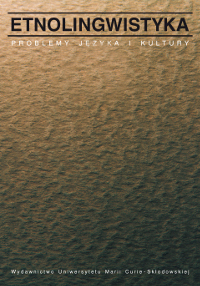Современный русский исторический миф и способы его воспроизведения
THE CONTEMPORARY RUSSIAN HISTORICAL MYTH AND ITS MANIFESTATIONS
Author(s): Elena E. LevkievskajaSubject(s): Anthropology, Language and Literature Studies, Applied Linguistics
Published by: Wydawnictwo Naukowe Uniwersytetu Marii Curie-Sklodowskiej
Keywords: Russian historical myth; Soviet myth; pro-Western myth; monarchic myth; ‘naïve’ image of the world; national identity; zapadnichestvo [westernism]
Summary/Abstract: The article discusses commonly entertained ideological models in contemporary Russia, which constitute the “naive” worldview reflecting Russian social self-awareness. Generally known historical myths not only explain the world, organize our understanding of it and help survive in critical situations, but above all build national identity, confirm one’s self-esteem and differentiate “us” from ”them”. They frequently assume an aggressive character and reinforce planned terror, cf. the myths of class struggle or world revolution, or the image of a hostile kułak (a rich peasant) in the Stalinist period. Myths imposed from above and designed to serve the interests of the authorities can only spread on a socially significant scale through social consent. For example, the image of Gagarin as a national hero was a success but the attempt to create a similar image of a first woman astronaut Valentina Tereshkova ended in total failure or even ridicule.Historical myths are based on the idea of a “golden age”. In Russia, there currently exist three generally approved myths: Soviet, pro-Western and monarchic. The first two constitute a pair linked by a principle of a mirror image, based on the idea of progress and a system of binary oppositions. According to the Soviet myth, the “golden ago” were the times of the Soviet Union, a superpower able to defend itself, insure law and order within its boundaries, provide social stability for its citizens and create a dynamically developing system opposed to the “rotten” West. The myth is still quite popular. Supporters of the pro-Western idea (commonly called zapadnichestvo) expect the “golden age” to come in the future, Russia being a mere province of the Western or American civilization. The historical progress would consist in approaching the Western ideal. The third ideological model makes references to the so called “Russian idea” (russkaya idea), whose beginnings date back to the 16th c. teaching of the monk Filofey on Moscow as the “Third Rome”, to the idea of the uniqueness of the Russian culture and history (Dostoyevsky), to the programme of gaining “self-awareness” (initiated by Lamansky in 1892), and directly to the ideas of "Young Russians” (mladorossy) of the 1920’s, for whom the "golden age” were the times before the revolution. The central event of the 20th c. Russian history is in this model the assassination of the tsar, who represented the unity of political and religious power. A recent manifestation of the myth is the book Rossiya pered vtorym prishestviyem, published in 1998. It presents various arguments, from biblical to contemporary, in offering a revived variety of the idea of Moscow as the Third Rome, with all significant elements of the myth: ethnocentricity, sacralization of the national history, dualism of good and evil (where Orthodox Russia is good and non-Orthodox West is evil), or religious justification of the monarchic idea. Important elements of the myth are the concept of guilt and penance, understood collectively rather than individually.Although the monarchic myth aspires to being Orthodox, it is very far from the real spirit of the Orthodox Church and its principles. It presents the faith in the tsar and monarchy instead of the faith in Christ, the idea of collective action in place of individual action and responsibility, it identifies the Orthodox Church with the monarchy and excludes from it those who do not share monarchic views.Currently, the monarchic model is functioning mainly as an oral tradition, but more and more frequently it finds its way to various writings, by which it is apparently gains esteem. The tsar, presented as a martyr and redeemer of the sins committed by the Russian nation, is portrayed as a cult superhero.
Journal: Etnolingwistyka. Problemy Języka I Kultury
- Issue Year: 12/2000
- Issue No: 12
- Page Range: 97-120
- Page Count: 24
- Language: Russian

